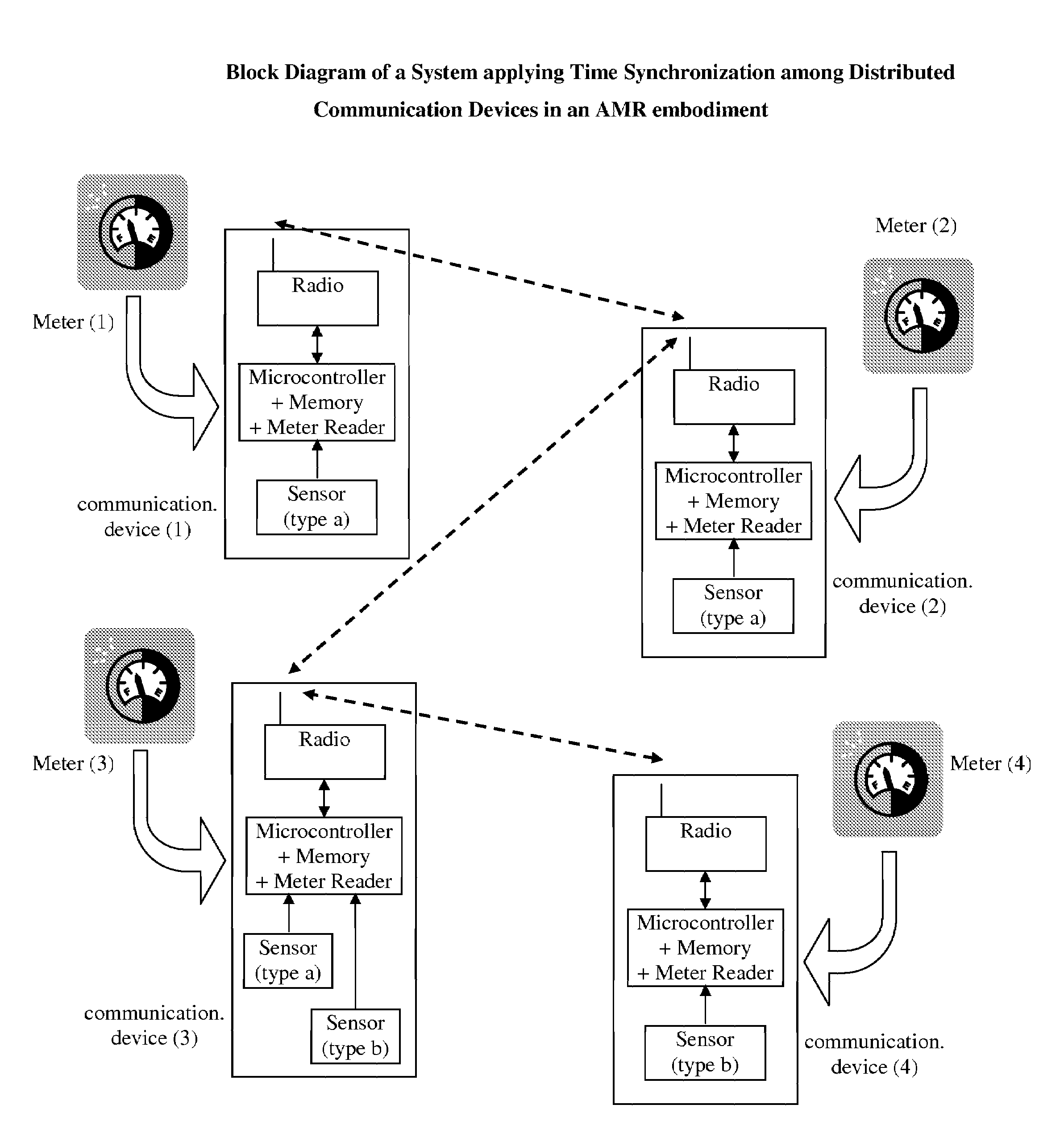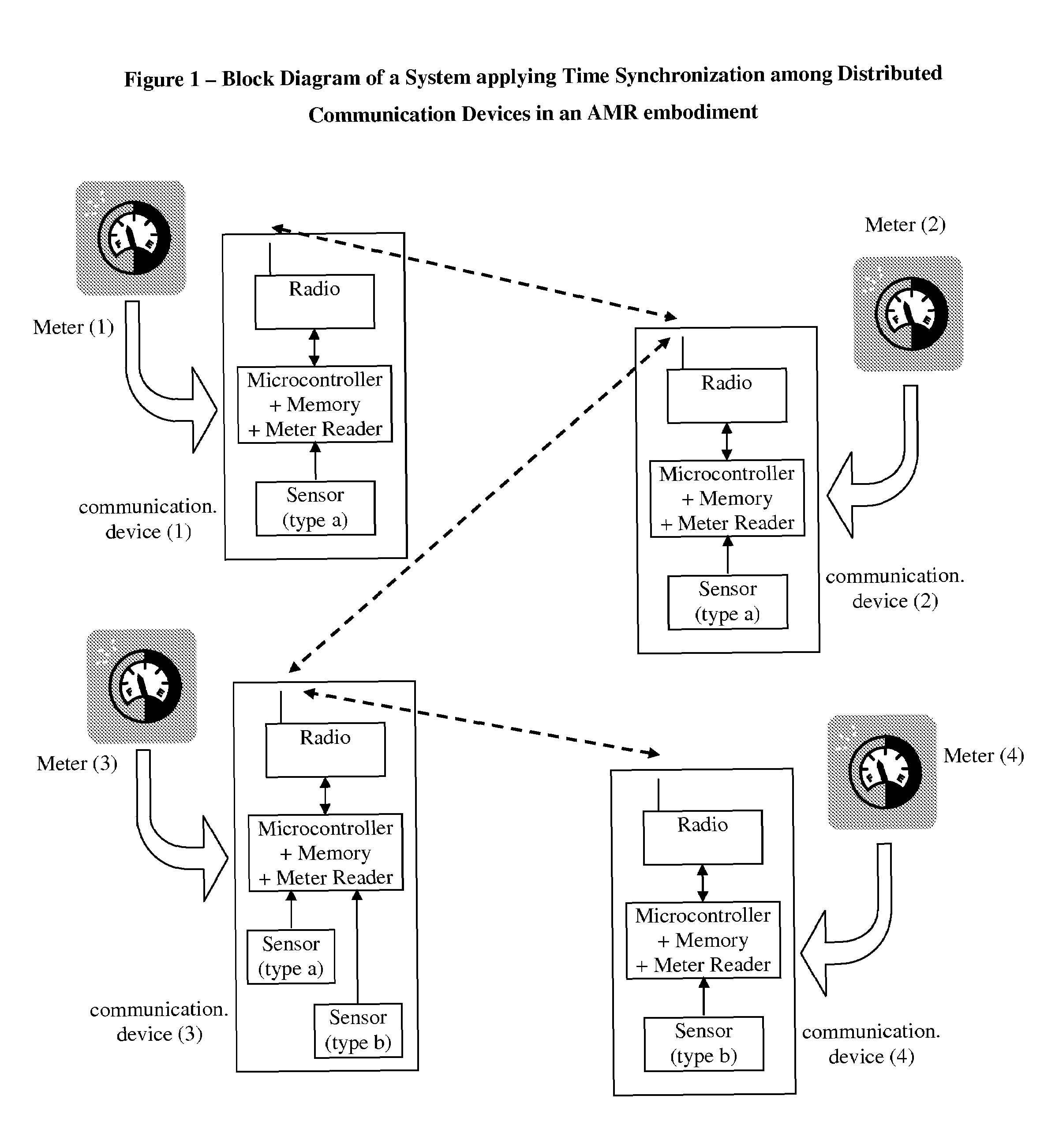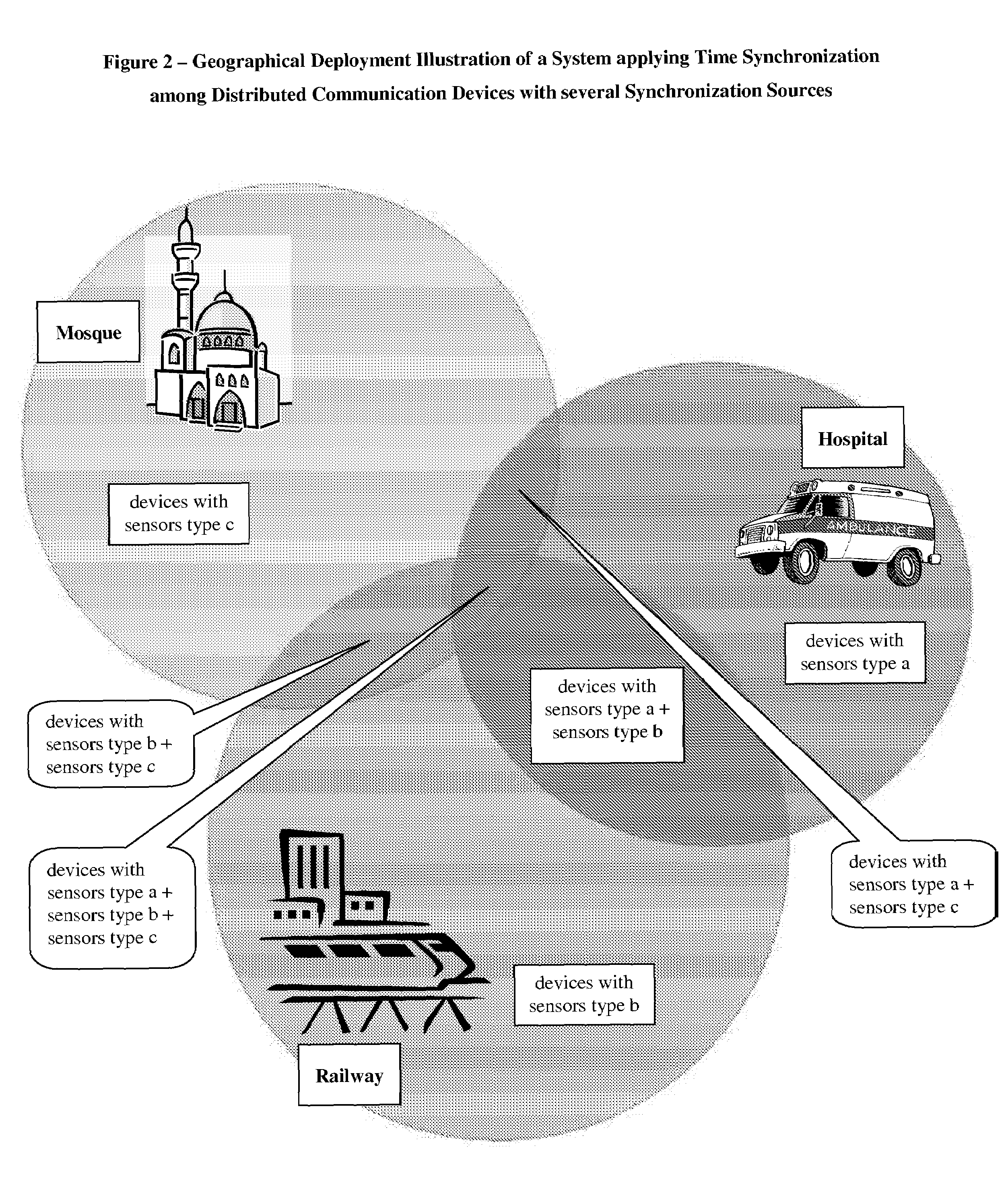Synchronization among distributed wireless devices beyond communications range
a wireless device and wireless technology, applied in the direction of transmission systems, tariff metering apparatus, sustainable buildings, etc., can solve the problems of waste of battery power, limited operational life, and limited energy capacity of batteries, and achieve the effect of saving battery power and fast detection
- Summary
- Abstract
- Description
- Claims
- Application Information
AI Technical Summary
Benefits of technology
Problems solved by technology
Method used
Image
Examples
Embodiment Construction
[0059]The invention will now be described with respect to various embodiments. The following description provides specific details for a thorough understanding of, and enabling description for, these embodiments of the invention. However, one skilled in the art will understand that the invention may be practiced without these details. In other instances, well-known structures and functions have not been shown or described in detail to avoid unnecessarily obscuring the description of the embodiments of the invention.
[0060]The invention is directed to a system and method for time synchronization among a plurality of distributed communication devices, each device coupled to a sensor and configured to be triggered by a signal derived from said sensor, said sensors configured to output a signal upon sensing a same event which is not a modulated communication transmission, wherein at least one of said communication devices achieves synchronization without communicating with other communic...
PUM
 Login to View More
Login to View More Abstract
Description
Claims
Application Information
 Login to View More
Login to View More - R&D
- Intellectual Property
- Life Sciences
- Materials
- Tech Scout
- Unparalleled Data Quality
- Higher Quality Content
- 60% Fewer Hallucinations
Browse by: Latest US Patents, China's latest patents, Technical Efficacy Thesaurus, Application Domain, Technology Topic, Popular Technical Reports.
© 2025 PatSnap. All rights reserved.Legal|Privacy policy|Modern Slavery Act Transparency Statement|Sitemap|About US| Contact US: help@patsnap.com



